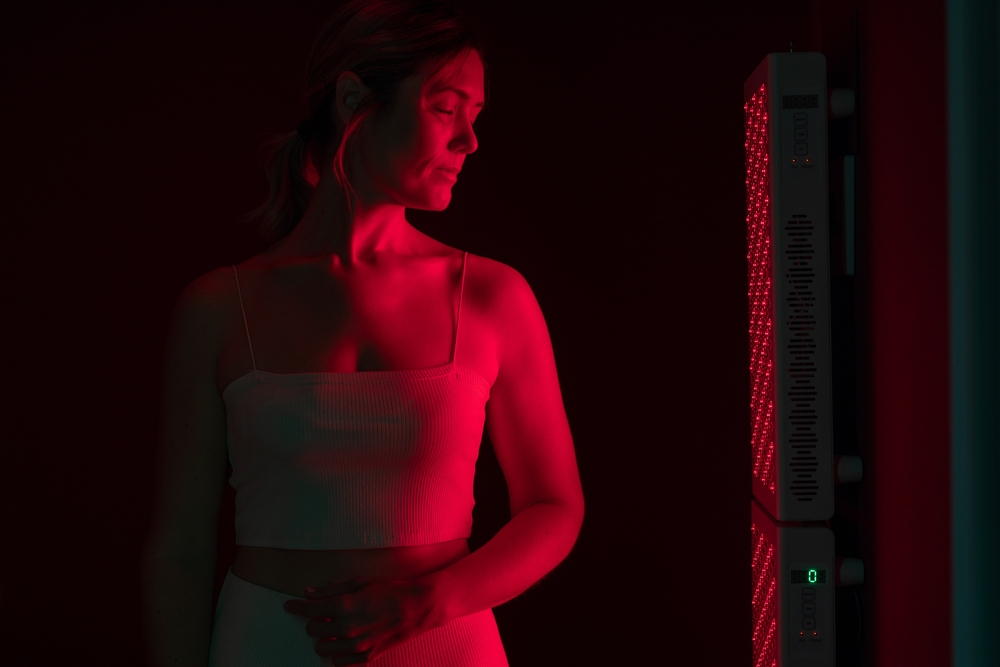Vitiligo has long stood as a puzzle for both patients and dermatologists alike. As research shines a light on potential treatments, Red Light Therapy emerges from the shadows. Let’s explore the illuminating connection between RLT and vitiligo.
What is Vitiligo?
Vitiligo is a perplexing skin condition where patches of skin abruptly lose their natural hue. This discoloration stems from the malfunction or destruction of melanocytes, cells responsible for producing skin pigment. Beyond the physical, it often leaves an emotional mark, affecting an individual’s self-esteem and confidence.

Why Does It Happen?
While the root cause of vitiligo remains elusive, several theories loom large. From genetic predispositions and autoimmune responses to emotional shocks, the potential triggers are manifold. However, a universal cure or solution still evades the medical realm.
Red Light Therapy: The Basics
Red Light Therapy, often dubbed Red Light Therapy, is no newcomer to the therapeutic arena. Utilizing low-level red and near-infrared light wavelengths, RLT offers a non-invasive treatment for a range of conditions. It’s not just for skin; its applications stretch to muscle recovery and even mental well-being.
How Does Red Light Therapy Work?
It’s all about the cellular dance. Our cells, particularly the mitochondria, respond positively to red light. This exposure boosts cellular energy production, potentially rejuvenating and repairing damaged cells, laying the foundation for RLT’s healing prowess.
Red Light Therapy and Vitiligo: The Connection
Now let’s explore if there are actually any conncetion between Red Light Therapy and Vitiligo.
Potential Healing Mechanism
In the maze of vitiligo treatment, Red Light Therapy might offer a guiding light. The therapy’s potential to reinvigorate melanocytes could pave the way for skin repigmentation, offering a beacon of hope to those navigating the challenges of vitiligo.
Research Insights
The intersection of RLT and vitiligo is still a budding research avenue. While some studies spotlight the merits of a combined treatment approach, like coupling RLT with PUVA, the standalone efficacy of RLT for vitiligo remains a topic of exploration and debate.
Strategies and Implementation of Red Light Therapy for Vitilgo

There are various types of workable strategies for red light therapy for vitilgo. Let’s explore them.
Combined Therapy Approach
Marrying multiple treatments can often amplify the benefits. For vitiligo warriors, a blend of traditional therapies with RLT might just be the ticket to better results.
Implementation: A holistic regimen could involve initial PUVA treatments, followed by methodical RLT sessions spread across weeks or even months.
Consistent Exposure
In the world of therapeutic treatments, persistence often pays off. Steady and consistent exposure to RLT can gradually steer the skin towards improved pigmentation.
Implementation: A gradual approach is key. Kickstart the journey with shorter sessions and ramp up based on skin reactions and professional advice.
Monitoring and Adjusting
Our skins narrate unique stories. As such, it’s paramount to monitor how one’s skin converses with RLT, adjusting the dialogue as needed.
Implementation: Harness the power of visual logs. Snapshots can capture the skin’s journey, offering invaluable insights and facilitating informed discussions with dermatologists.
Considerations for Red Light Therapy
Before taking the red light therapy, consider the following issue.
Skin Sensitivity: Delicate skins might blush a tad post-treatment. It’s vital to understand one’s skin temperament before diving deep into RLT.
Cost: The financial spectrum of RLT varies. While home-based devices offer a more pocket-friendly approach, professional sessions can lean towards the pricier side.
Duration: Rome wasn’t built in a day, and skin repigmentation is no different. The journey with RLT requires a blend of hope, patience, and tenacity.
Conclusion
In the ever-evolving landscape of vitiligo treatments, Red Light Therapy stands as a glimmer of hope for many. While its efficacy varies from one individual to another, its potential can’t be dimmed. It’s crucial to embark on the RLT journey with open eyes, guided by professional insights, and a heart full of optimism. After all, every beam of light, red or otherwise, can illuminate paths previously unseen.
Frequently Asked Questions
Can RLT cure vitiligo?
While RLT shows promise in treating vitiligo, especially when combined with other treatments like PUVA, it’s not considered a ‘cure’. The results can vary from person to person.
How long does it take to see results from RLT for vitiligo?
The timeline varies based on individual cases, the severity of vitiligo, and consistency in treatment. Some may notice changes in a few weeks, while for others, it may take months.
Are there any side effects of using RLT for vitiligo?
RLT is generally safe, but some people, especially those with sensitive skin, may experience mild redness or irritation post-treatment.
Can I use RLT at home for vitiligo treatment?
Yes, there are at-home RLT devices available. However, it’s essential to choose a device of good quality and consult with a dermatologist to ensure you’re using it correctly and effectively.
Is RLT more effective when combined with other treatments for vitiligo?
Some studies indicate enhanced results when Red light therapy is combined with traditional treatments like PUVA. It’s essential to tailor treatment approaches based on individual needs and expert advice.
How often should I undergo RLT for vitiligo?
Consistency is crucial for potential results. The exact frequency should be determined by a dermatologist based on the specific case and the severity of vitiligo.
Is RLT for vitiligo expensive?
The cost varies. Professional RLT treatments can be on the higher end, but there are also more budget-friendly at-home devices available.
What should I keep in mind before starting RLT for vitiligo?
It’s essential to have realistic expectations, consult with a dermatologist, understand potential side effects, and be patient, as results might be gradual.